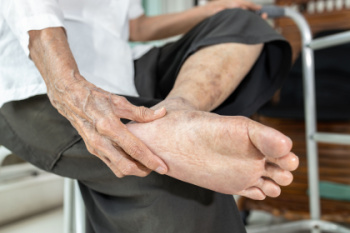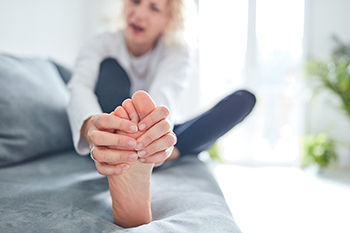
Ankle sprains occur when the ligaments surrounding the ankle are stretched or torn due to sudden twisting or rolling movements. Recognizing the symptoms of an ankle sprain is essential for prompt and effective treatment. One common symptom is pain, which can range from mild discomfort to severe agony, depending on the extent of the injury. Swelling surrounding the affected area is also a typical sign of an ankle sprain, as the body responds to the trauma by sending fluids to the injured site. Individuals may also experience bruising, tenderness to touch, and difficulty bearing weight on the affected ankle. In some cases, a popping sensation may be felt at the time of injury. It is important to seek medical attention if you suspect an ankle sprain, as proper diagnosis and treatment can prevent further damage and promote faster recovery. If you have any of the above symptoms, you may have sprained your ankle, and it is suggested that you contact a podiatrist for a proper diagnosis and appropriate treatment techniques.
Although ankle sprains are common, they aren’t always minor injuries. If you need your ankle injury looked at, contact one of our podiatrists from Canonsburg Podiatry Associates. Our doctors can provide the care you need to keep you pain-free and on your feet.
How Does an Ankle Sprain Occur?
Ankle sprains are the result of a tear in the ligaments within the ankle. These injuries may happen when you make a rapid shifting movement while your foot is planted. A less common way to sprain your ankle is when your ankle rolls inward while your foot turns outward.
What Are the Symptoms?
- Pain at the sight of the tear
- Bruising/Swelling
- Ankle area is tender to touch
- In severe cases, may hear/feel something tear
- Skin discoloration
Preventing a Sprain
- Wearing appropriate shoes for the occasion
- Stretching before exercises and sports
- Knowing your limits
Treatment of a Sprain
In many cases, the RICE method (Rest, Ice, Compression, and Elevate) is used to treat ankle sprains. However, you should see a podiatrist to see which treatment option would work best with your injury. In severe cases, surgery may be required.
It is important to ask your doctor about rehab options after you receive treatment for your injury. Stretching, strength training, and balance exercises may help the ankle heal while also preventing further injury.
If you have any questions, please feel free to contact our office located in Canonsburg and McMurray, PA . We offer the newest diagnostic and treatment technologies for all your foot care needs.









